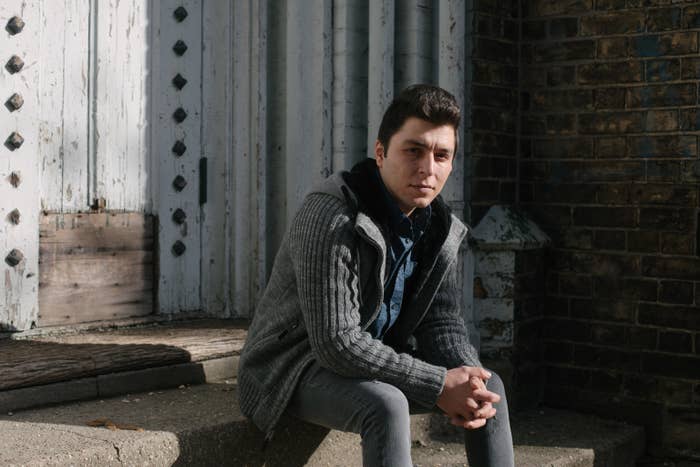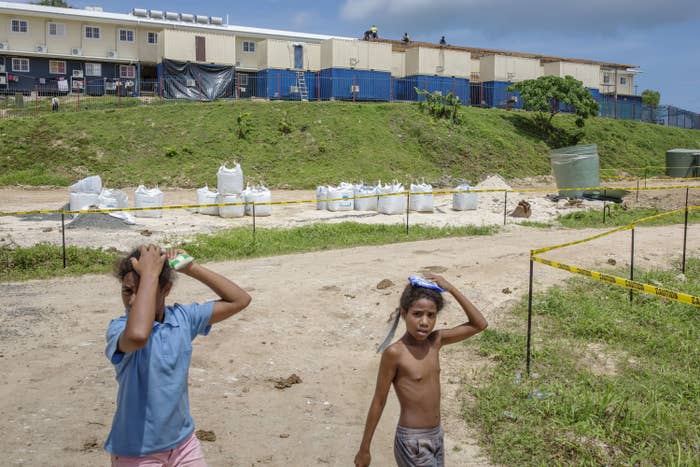In Europe, Italians are the richest population in terms of genetic wealth. This is now common knowledge. The gradient of their genetic variability, scattered all over the peninsula, encloses on a small scale the whole genetic variance between southern and continental Europeans. This amazing diversity started to accumulate soon after the Late Glacial Maximum, which ended approximately 19,000 years ago.
This is what some researchers of the University of Bologna report in a paper published in the BMC Biology journal. It is the first time that a group of scientists is able to go so back in time in retracing Italians' genetic history. Results also show that there are some genetic peculiarities characterising people living in the north and south of Italy, that evolved in response to different environments. These peculiarities contribute to reducing, on the one hand, the risk of kidney inflammation and skin cancers, and, on the other hand, the risk of diabetes and obesity, favouring sometimes a longer lifespan.
"Gaining an understanding of the evolutionary history of the ancestors of Italians allows us to better grasp the demographic processes and those of environmental interactions that shaped the complex mosaic of ancestry components of today's European populations", explains Marco Sazzini, one of the principal investigators of this study and professor of Molecular Anthropology at the University of Bologna. "This investigation provides valuable information in order to fully appreciate the biological characteristics of the current Italian population. Moreover, it let us understand the deep causes that can impact on this population's health or on its predisposition to a number of diseases".
AN UNEXPECTED OUTCOME
To carry out this study, researchers sequenced the entire genome of forty participants, who were selected as representatives of the biological variability of the Italian population with a good approximation. The analysis brought to the fore more than 17 million genetic variants. Scientists then made a twofold comparison. First, they compared these data against the genetic variants observed in other 35 populations from Europe and from the Mediterranean. Second, they compared the same data against the genetic variants found in studies on almost 600 human remains dating from the Upper Palaeolithic (approx. 40,000 years ago) to the Bronze Age (approx. 4,000 years ago).
These comparisons reached such high levels of precision that it was possible, for the first time, to go way back in time in Italians' genetic history, extending the investigation to very remote time periods with respect to what achieved by previous studies. Eventually, this led to the identification of traces left in Italians' gene pool by events that just followed the last glaciation, which ended more or less 19,000 years ago.
The bulk of the scholarship in this field has so far suggested that the oldest events leaving a trace in Italians' DNA were the migrations that had taken place in the Neolithic and the Bronze Ages, between 7,000 and 4,000 years ago. The results of this study show, on the contrary, that the earliest biological adaptations to the environment and migrations underlying Italians' extraordinary genetic diversity are much older than previously thought.
CLIMATE CHANGES AND POST-GLACIAL MIGRATIONS
Researchers traced the evolutionary history of the two groups at the opposite ends of Italians' gradient of genetic variability. This means that they evaluated and measured differences between the gene pools of participants from southern and northern Italy and observed when these differences became evident.
"We observe some partially overlapping demographic trends among the ancestors of these two groups from 30,000 years ago and for the remaining years of the Upper Palaeolithic", illustrates Stefania Sarno, a researcher at the University of Bologna and one of the co-first authors of the paper. "However, we witness to a significant variation between their gene pools from the Late Glacial period, thus some thousands of years before those great migrations that happened in Italy from the Neolithic onwards".
Here, the main hypothesis is that with temperatures rising and, as a consequence, glaciers shrinking, some groups of people who made it through the glaciation period thanks to "glacial refugia" in central Italy, moved north and drifted away, and thus progressively isolating themselves, from the inhabitants of southern Italy.
The DNA of people living in northern Italy shows traces of these post-glacial migrations. If compared to individuals from southern Italy, Italians from the north present a close genetic relation to human remains attributed to ancient European cultures such as the Magdalenian and the Epigravettian cultures and dated respectively between 19,000 and 14,000 years ago and between 14,000 and 9,000 years ago. Moreover, in northern Italians' gene pool ancestry components even more ancient were observed, such as those proper of Eastearn European hunter-gatherers, which are thought to characterize all European populations between 36,000 and 26,000 years ago and that later on spread again to western Europe with migratory movements from "glacial refugia" during the Late Glacial period.
Conversely, in southern Italians, these post-glacial migrations traces seem to vanish, as more recent events significantly reshaped their gene pool. This is confirmed by their closer genetic relation with Neolithic human remains from Anatolia and the Middle East, and with Bronze-Age remains from the South Caucasus. Differently from the north of Italy, the south was the main hub for migratory movements, which firstly spread agriculture to the Mediterranean area during the Neolithic transition, and then, during Bronze Age, fostered a new ancestry component. The latter differs from the ancestry component associated with populations of the Eurasian steppe that spread during the same time across continental Europe and northern Italy.
GENETIC ADAPTATIONS: DIFFERENCES AND PECULIARITIES ACROSS ITALY
19,000 years ago, after the end of the Last Glacial Maximum, ancestors of northern and southern Italians started living in increasingly different environmental and ecological contexts, which gradually led to the emergence of differences and peculiarities in their gene pools.
For millennia, the populations resettling in northern Italy endured abrupt climate changes and environmental pressures similar to those of the Last Glacial Maximum. These circumstances brought to the evolution of specific biological adaptations. For instance, populations in northern Italy developed a metabolism optimized for a diet rich in calories and animal fat, which are essential to survive in cold climates. "In the subjects from northern Italy, we observed changes in the gene networks regulating insulin and body-heat production as well as in those responsible for fat tissue metabolism", says Paolo Garagnani, professor of Experimental Medicine and Pathophysiology at the University of Bologna. "These changes could have developed, today, in key factors reducing the susceptibility to diseases like diabetes and obesity".
While this was happening in northern Italy, in the south, a warmer climate exposed its populations to a different kind of environmental pressures. The genomes of people from southern Italy show changes in the genes encoding for mucins, which are proteins to be found in the mucous membranes of the respiratory and gastro-intestinal systems and that prevent pathogens to attack the tissues. "These genetic adaptations may have evolved in response to ancient micro-organisms", says Paolo Abondio, Ph.D. student at the University of Bologna and another co-first author of this study. "Some scholars have linked some of these genetic variants with a reduced susceptibility to Berger's disease, which is a common inflammation affecting the kidneys and is indeed less frequent in the south than in the north of Italy".
Researchers identified also other peculiarities in the genome of southern Italians. For example, there are some modifications in the genes regulating the production of melanin, the pigment that provides colour to the skin. Most probably, these alterations developed in response to more intense sun-light and to a higher number of sunny days that characterise the Mediterranean regions. In turn, these alterations may also have contributed to a lower incidence of skin cancers among southern Italians. "We observed that some of these genetic variants have been also linked to a longer lifespan. This is also true for other genetic modifications which are characteristic of southern Italians. These are found on genes involved in the arachidonic acid metabolism and on those encoding for FoxO transcription factors", according to Claudio Franceschi, Emeritus Professor of the University of Bologna.
THE AUTHORS OF THE STUDY
The study was led by professors of the University of Bologna, Marco Sazzini, Claudio Franceschi and Paolo Garagnani, in collaboration with Patrick Descombes (Nestlé Research Center, Lausanne, Switzerland) and Massimo Delledonne (University of Verona). A paper entitled "Genomic history of the Italian population recapitulates key evolutionary dynamics of both Continental and Southern Europeans" was then published in the BMC Biology journal.
The study featured researchers of the Molecular Anthropology Lab and the Centre for Genome Biology of the Department of Biological, Geological and Environmental Sciences at the University of Bologna: Marco Sazzini, Paolo Abondio, Stefania Sarno, co-first authors of the paper, and also Sara De Fanti, Claudia Ojeda-Granados, Cristina Giuliani, Alessio Boattini and Davide Pettener. Moreover, researchers at the Department of Experimental, Diagnostic and Specialty Medicine also took part in the study: Chiara Pirazzini, Elena Marasco, Gastone Castellani, Claudio Franceschi and Paolo Garagnani. Researchers of these two departments worked together within the framework of the activities of the Interdepartmental Center "Alma Mater Research Institute on Global Challenges and Climate Change".
Donata Luiselli from the Department of Cultural Heritage of the University of Bologna also participated in this study. Finally, Guido Alberto Gnecchi Ruscone (Max Planck Institute for the Science of Human History in Jena, Germany), Massimo Delledonne (University of Verona), Luciano Xumerle (University of Verona), Alberto Ferrarini (University of Verona) and researchers of the Nestlé Research Center in Lausanne (Switzerland), of the Policlinico of Milan, of the University of Florence and of the University of Calabria took part in the study.
###


















